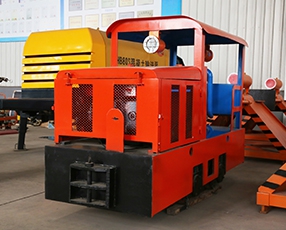How Battery-Powered Locomotives Work: A Technical Breakdown
Date:2025-05-13 Label:
Electric Locomotive
Diesel Locomotive
Underground Mining Locomotive
Trolley Locomotive
Battery Locomotive
Narrow Gauge Locomotive
Explosion-proof Mining Locomotive
Overview
A
battery-powered locomotive (also known as a battery-electric locomotive) is an environmentally friendly rail vehicle that operates using rechargeable batteries instead of diesel engines or overhead electric lines. These locomotives are widely used in industrial, mining, and urban transit applications where emissions reduction, noise control, and operational flexibility are essential.

Key Features
Zero Emissions – Unlike diesel locomotives, battery-powered models produce no exhaust emissions, making them ideal for enclosed spaces like mines and tunnels.
Energy Efficiency – Regenerative braking systems recover energy during deceleration, improving battery life and efficiency.
Low Noise – Battery operation significantly reduces noise pollution compared to diesel engines.
Flexible Operation – No need for overhead catenary wires or third rails, allowing operation in areas without electrified infrastructure.
Reduced Maintenance – Fewer moving parts than diesel locomotives result in lower maintenance costs.
Applications
Mining & Tunneling – Used in underground mines due to their emission-free operation.
Industrial Shunting – Efficient for moving rail cars in factories, ports, and freight yards.
Urban Light Rail & Tramways – Some cities deploy battery-powered trams to avoid costly electrification.
Hybrid Systems – Often paired with overhead electric or diesel power for extended range.
Battery Technology
Modern
battery-powered locomotives typically use:
Lithium-Ion (Li-ion) – High energy density, fast charging, and long lifespan.
Lead-Acid – Lower cost but heavier and with shorter life cycles.
Fuel Cell Hybrids – Some models integrate hydrogen fuel cells for extended range.
Advantages Over Diesel &
Battery-powered locomotives
Feature
Battery Locomotive
Diesel Locomotive
Electric Locomotive
Emissions
Zero
High (CO₂, NOₓ)
Zero (if renewable energy)
Noise Level
Low
High
Moderate
Infrastructure
Minimal (charging stations)
Fuel supply needed
Overhead wires/third rail
Energy Cost
Lower (electricity vs. diesel)
Higher (fuel-dependent)
Varies by grid source
Future Trends
Fast-Charging Technology – Reducing downtime with rapid battery swaps or high-power charging.
AI & Smart Energy Management – Optimizing battery usage for longer range.
Hydrogen-Battery Hybrids – Combining fuel cells with batteries for extended operation.
Conclusion
Battery-powered locomotives represent a sustainable alternative to traditional rail propulsion systems, offering cleaner, quieter, and more flexible operations. As battery technology advances, their adoption is expected to grow in both industrial and public transport sectors.